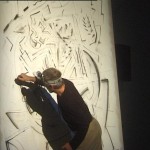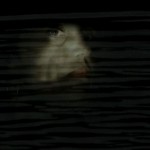research proposal
The PEEK-Project „Artist Philosophers. Philosophy as Arts-Based Research“ [AR 275-G21] is sponsored by the Austrian Science Funds [FWF] and situated at the University of Applied Arts Vienna. Principle Investigator: Arno Böhler, University for Applied Arts Vienna in co-operation with Tanzquartier Wien. Additional co-operation partners: Jens Badura, Laura Cull, Susanne Valerie Granzer, Walter Heun, Alice Lagaay, Elisabeth Schäfer.
NEWSLETTER
If you want to be updated about all our activities and events please subscribe to our
Research Proposal as PDF
Description of the project
1. SIGNIFICANT ASPECTS OF THE PROJECT CONCERNING ARTS-BASED RESEARCH
1.1 International research context of the project
At the time when the principle investigator started to focus his research on the question of performance and philosophy in 1997, neither the notion of lecture-performance (Kruschkova 2013) nor the problem of Thinking Performance (Rokem 2010; Badura 2012a; Böhler 2013a) had been recognized as an emerging research field within the worldwide scientific community of philosophy.
Things have changed significantly, since then. Especially in the past five years an international network of artists, scientists and philosophers has started to investigate the relation between philosophy and performance all over Europe and beyond (cf.: https://homepage.univie.ac.at/arno.boehler/php/?p=2018; https://www.soundcheck-philosophie.de/; https://www.cappe.edu.au/staff/edward-spence.htm; https://performancephilosophy.ning.com/ ).
It will be a major approach of this project to enhance the research of this young but nevertheless worldwide growing network working at the cutting edge of philosophy and the performing arts, in which the principle investigator Arno Böhler––and co-operation partners Jens Badura, Laura Cull, Susanne Valerie Granzer, Walter Heun and Alice Lagaay––play an international leadership role.
1.2 Philosophy as arts-based research
1.2.1 Artist-Philosophers
While traditionally artists are requested by their very profession to be aware of the significance of the spatial setting in which they exhibit their works and performing bodies, philosophers and scientists seldom care about such “external” and “accidental” matters. Obviously this is because in their disciplines one assumes that the local context in which one presents a scientific or philosophical idea is of no account for its meaning (cf. Philosophy On Stage#3 https://homepage.univie.ac.at/arno.boehler/php/?p=3142). Or, as Granzer and Böhler have recently expressed the matter in a talk at CRASSH, the Centre for Research in the Arts, Social Sciences and Humanities at the University of Cambridge (UK): “(T)he common image of thinking that standardizes the practice of doing science and philosophy in the academic world all over the globe today is usually not used to think in an ele_mental way. Even if one writes a philosophy of lived-bodies, one does not work with one’s own body, with the room, in which one’s body appears and the material settings of things, with whom one shares the room. While one is developing a philosophy of lived-bodies, one is rather concerned with paper(s) and texts.” (Granzer; Böhler 2013b, p. 5).
Though today’s scientists and philosophers rarely reflect upon the relation of their theories to the local circumstances under which they present them, one finds prominent artist-philosophers in the classical history of philosophy, like Plato and Nietzsche e.g., who, on the contrary, were highly sensitive to the spatial context in which their thoughts emerged and their teachings took place. They were obviously aware of the fact that it makes a vital difference where a thought occurs, and under what circumstances and in what places it is communicated; in the market square, at a place outside or inside Athens city walls, on a mountain, at midnight, on a hot or a cold day etc. (cf. Parkes 2009). For an artist-philosopher like Plato, ideas evidently do not reside in a transcendent Platonic heaven, but they show up in telling situations in a dramatic rather than an idealistic (“Platonic”) manner (cf. Puchner 2010).
While assuming a secret relation between the configuration of a particular set of circumstances and ideas showing up, artist-philosophers obviously think like artists. Because, like artists, they are not only concerned with the conceptualization of general ideas but also with the concrete spatio-temporal design of material conditions that allows their concepts to arrive. Artist-philosophers could therefore be defined as the kind of philosophers who are sensitive to the fact that ideas possess an immanent relation to a precise bodily configuration that enables them to take place within it and by virtue of it. Performing these caesurae, they are in fact no longer “pure” philosophers, at least according to today’s international standards, insofar as they perform philosophy as arts-based research rather than as a purely hermeneutic (discursive) type of “Socratic” science only (cf. Böhler 2013d).
In this context, Nietzsche’s concept of the “Künstlerphilosoph” (artist-philosopher) seems extremely fruitful to us for this new approach toward philosophy, since he, being an artist-philosopher himself, displaced the classical image of art and philosophy in a direction that calls philosophers and artists to come to cross their disciplines over in order to re-create their traditional images anew; and precisely not to make them both, art and philosophy, one and the same. On the contrary, according to Nietzsche, by virtue of their differential combination something is called to arrive that provides both disciplines with a power to overcome their past and differentiate themselves from it, for the sake of a new philosophy and art to come. Or, as Jens Badura expressed this matter in one of his recent publications: “[a]rt-based research is expressly aimed towards making contact with other forms of cognitive production, towards going beyond the classic forms presenting art […].” (Badura 2012c)
In order to perform philosophy on an ele_mental (cf. Fink 1977, Merleau-Ponty 1969, Böhmer; Hilt 2007) level as an arts-based research matter, Nietzsche was forced to call a new kind of artist-philosophers to come––“philosophers of the future”––who are ready to demonstrate their ideas both on a conceptual and an embodied, corporeal level (cf. Nietzsche 1980a, vol. 5, pp. 15-17, pp. 59-63, Derrida 1997, pp. 34 et seqq., GRENZ_film 2005). They will have to realize that meaning too emerges from differential relations to others and is not grounded in a single subject, as the subject of modernity wrongly assumed. Neither meaning nor possibilities reside in a transcendent, second world of pure possibilities, as if they were to exist independently by themselves behind the empirical context in which they appear (cf.: https://www.sfb-performativ.de/seiten/frame_gesa_engl.html; Krämer 2004, 2001, 2002, Mersch 2001, 2002, Fischer-Lichte 2004, 2012, Wirth 2002). Rather they are created immanently, to wit, out of the differential relations somebody shares with others within a certain earthly milieu. From an immanent point of view, “spiritual matters” like meaning, ideas, possibilities literally occur between one and another; in a collective rather than an individualistic manner: namely, as a mode of existence among others (Deleuze 1992, pp. 191-320, Spinoza 2000); as the singularity of a multitude that grows immanently out of processes of differentiation (Nancy; Schérer 2008, Deleuze 1994, Böhler 2013c), as a form of Being Singular Plural (cf. Nancy 2004, 1988, 2003).
Staging philosophy thus makes sense in particular with a view to creating an image of thought (cf. Deleuze 1994, pp. 129-167, Rokem 2010, pp. 177-194) that wants to remind us, philosophers and non-philosophers (cf. Balke; Rölli 2011, pp. 7-27), to remember the significance of the material conditions at work while somebody is doing science and philosophy. This is also what gives performance philosophy an essentially political relevance as it not only draws explicit attention to its own conditions of production but also seeks to embody and communicate a form of philosophy that is relevant to the experienced world.
1.2.2 Practicing a new methodology: staging philosophy
The method of staging philosophy has proven to be a groundbreaking new methodology for arts-based research in our former research projects, sponsored by the Austrian Science Fund FWF (cf. Philosophy On Stage#3):
https://homepage.univie.ac.at/arno.boehler/php/?p=3142 and Philosophy On Stage#1/#2: https://www.univie.ac.at/performanz/). Because once philosophers and scientists are asked to demonstrate their ideas on stage, they immediately develop an arts-based research practice sensible to and mindful of the material conditions in which they present their theories. Suddenly things matter which usually do not matter for “pure” philosophers and “scientists”, whereas they have always mattered for the arts and artist-philosophers:
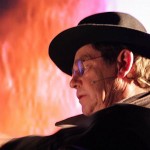
The light situation in the room [cf. Tholen; Kovacic 2011]

The mode in which one makes use of one’s body during a philosophical talk [cf. Steinweg 2011]
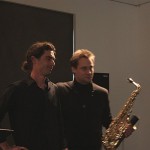
The timbre and sound of somebody’s voice [cf. Badura 2011]
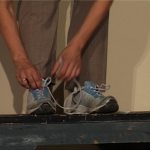
The architecture of the building in which the presentation of a lecture takes place [cf. Bitterli 2011]

The spatial setting of the audience [cf. Poelstra 2011]

The dress code in academic speeches [cf. Maier 2011]
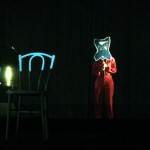
The way one expresses oneself to others [cf. Böhler; Granzer 2011]
These examples from our research festival “Philosophy On Stage#3” at Haus Wittgenstein in Vienna in 2011 show strikingly that the ele_mental involvement of the flesh in the production of scientific theories almost automatically becomes a major issue in which “matter comes to matter” (Barad 2003), once scientists and philosophers are “forced” to demonstrate their ideas on stage and thus perform their disciplines within an artistic setting using arts-based research practices.
That this new methodology possesses a high potential is demonstrated also by the development of a forum founded by our co-operation partner Laura Cull in 2008. The Performance Studies international & Performance Philosophy Working Group within Performance Studies international (PSi-PPWG) had grown to include over 300 international members in 2012. Due to this rapid expansion the group had to decide that a new association was needed to support the growth of PERFORMANCE PHILOSOPHY as a distinct association separated from PSi in 2012. This new association now has well over 800 international members (cf.: https://performancephilosophy.ning.com/page/about).
Responding to the evident success of Philosophy on Stage #1-3, a second major approach of this project consists of the further enhancement of this new methodology of staging philosophy (and the sciences) as an arts-based research rather than a merely discursive praxis (Böhler 2013d).
1.2.3 Aims of the project
The project proposes to investigate the following key questions which drive the research:
• What happens to the traditional image of philosophy, once philosophers start to stage philosophy and implement arts-based research methods into their discipline?
• What is the gift of such a conception of philosophy to the arts and arts-based research?
• What happens with philosophy and the arts, once artists are involved in the corporeal demonstration of philosophical works such as Friedrich Nietzsche’s Thus Spoke Zarathustra?
• What is peculiar about the figure of the artist-philosopher, who is performing philosophy as arts-based research in a post-Socratic (embodied) rather than a Socratic (discursive) manner only?
• Can Nietzsche’s concept of the artist-philosopher help find into a new relation between philosophy and the arts that will ultimately produce a different kind of (immanent) philosophy and new forms of (immanent) art at the end? (Cf. immanent performativity, proposal p. 5)
These research concerns will be realized in the following steps:
• By organizing three international conferences at Haus Wittgenstein in Vienna to strengthen the international debate on the conception of philosophy as arts-based research [cf. (WP) 1].
Working-titles of the three conferences:
• Nietzsche’s Artist-Philosopher in the Light of Arts-Based Research
• Immanent Performativity: The Gift of Staging Philosophy?
• Philosophy as Arts-Based Research. Mapping a new Research Field
• The key-contributions of the conferences will be published by three anthologies in German and one in English (cf. WP 2). Contributions in peer-reviewed journals like JAR, https://www.researchcatalogue.net/ are also planned to be published
• In addition, three art-labs will be organized at Tanzquartier Vienna, where distinguished artists and philosophers will develop fleshly modes to stage their different ideas on Nietzsche’s Zarathustra. The Artist-philosopher for the research-festival Philosophy On Stage#4 (cf. WP 3).
• The research festival Philosophy On Stage#4 Zarathustra: The Artist-Philosopher will be realized at Tanzquartier Vienna in 2015 to elaborate new artistic modes of staging philosophy (cf. WP 4).
• Finally, the festival will be documented online on our project website and its media library (cf.: https://homepage.univie.ac.at/arno.boehler/php/?p=2018, cf. WP 5).
1.2.4 Staging philosophy: A post-hermeneutical approach toward philosophy
In accordance with Dieter Mersch one could characterize our methodology and concept of staging philosophies as a post-hermeneutical approach toward philosophy (cf. Mersch 2010, pp. 7-30), insofar as we claim to do philosophy “after” the Lingustic Turn (cf. Mersch 2010, p. 19, Rorty 1967) by re-affirming, both conceptually and methodologically, an ele_mental place that is prior to the discursive force of interpretation (Gumbrecht 2004, Mersch 2010, p. 25). This does not mean that the ele_mental dimension of the flesh could occur independently of the performance of an act of interpretation. A post-hermeneutical perspective simply claims that the element of the flesh is always already there whenever an act of interpretation takes place, so that the performing of a mindful action implies both a cultural and a natural dimension at the same time (cf. Casey 1996, pp. 23-43, de Man 1987, Granzer 2011; Spinoza 2000, p. 117, p. 48, Kruschkova 2002).
The conceptual and methodological consequences of such a conception of embodied minds and incorporated selves (cf. O’Donovan-Anderson 1996) are far-reaching. Because, any act of thinking would then necessarily come along with the attempt to design peculiar bodily conditions under which a certain idea can arise and thereby “immanate” (cf. Agamben 1999, p. 223, pp. 234-235, Böhler 2013c, pp.1-2) within the flesh of our world, at least in a preliminary mode.
When, in line with Wittgenstein’s Philosophical Investigations, Lyotard posits that in postmodern times scientists and philosophers are in a condition similar to that of artists, insofar as they too have to construct the rules of their science and philosophy nowhere else than in the accomplishment of their experimental research performance alone (cf. Lyotard 1984, p. 81), one can call the main characteristic of postmodern research a conception of immanent performativity.
1.2.5 Immanent performativity
From a historical point of view, the notion of immanence has become a key-concept of contemporary philosophies through Deleuze and his readings of Nietzsche and Spinoza (cf. Cull 2013, Böhler 2013c, Steinweg 2012, Haynes 2012; Balke; Rölli 2011, Mullarkey 2010, de Beistegui 2010, Kerslake 2009, Agamben 1999, Günzel 1998, Irigaray 1991). Because they, for Deleuze, developed the purest plane of immanence that made no compromise at all with transcendence (cf. Deleuze 1994, p. 48).
Since the very nature of immanence can only “immanate” by virtue of a research performance that demonstrates a proper fleshly mode of its temporary be-coming, it will be a further task of this project to construct such a research performance. One that is able to design a festival-corpus on a plan(e) of immanence that allows immanence to express itself in a particular mode through a special configuration of the bodies who constitute its flesh as long as the festival endures.
1.3 Importance of increasing the international competitiveness of Austria’s arts-based research
There are good reasons to believe that many research performances to come will imply arts-based research aspects in which one explicitly elaborates on the problem of how scientific ideas should be physically designed in order to communicate them. One can even assume that a new form of art and science-industry will develop around the idea of arts-based research in the near future. Further on, there will not only be laboratories for the natural sciences only but art-laboratories as well, where the significance of the corporeal mediation of “ideal contents”, their taking place (though in an always preliminary mode of expression), will be addressed in practical terms.
Since Austria has traditionally had an excellent status in many fields of the arts, it is extremely important that it not miss this chance to play a significant role in this promising research area that is currently unfolding on the boundary of the relation between the arts and sciences (Badura 2011a; 2012a,b,c; 2013).
1.4 National and international networking (collaborations, visibility)
The first class research network of the national and international institutions co-operating in this project––University of Applied Arts Vienna (research seat), University of Music and Performing Arts Vienna (Max Reinhardt Seminar), University of Bremen, University of Surrey, Zurich University of the Arts and Tanzquartier Vienna will provide an almost perfect research environment for the accomplishment of these project goals according to highest international standards in arts-based research. The publication strategies of this project––anthologies in German and English (Palgrave MacMillan), the online documentation on the project website and contributions in peer reviewed journals (like JAR)––will strengthen the international awareness of research in this field. On the other hand, this network will consolidate the high international reputation of the co-operating institutions.
Research Team: Artist Philosophers. Philosophy as Arts-Based Research.
Projektleitung [Principle Investigator]:
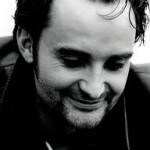 Univ.Doz.Dr.habil Arno Böhler (Department of Philosophy, University Vienna; University of Applied Arts Vienna)
Univ.Doz.Dr.habil Arno Böhler (Department of Philosophy, University Vienna; University of Applied Arts Vienna)
Nationale Ko-operationspartner_innen [National co-operationspartners]:
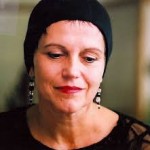 Univ.Prof. Dr. Susanne Valerie Granzer, Full Professor for Performing Arts at Max Reinhardt Seminar, University of Music and Performing Arts Vienna
Univ.Prof. Dr. Susanne Valerie Granzer, Full Professor for Performing Arts at Max Reinhardt Seminar, University of Music and Performing Arts Vienna
 Walter Heun (Artistic Director of Tanzquartier Wien)
Walter Heun (Artistic Director of Tanzquartier Wien)
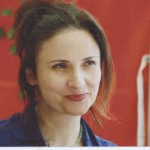 Dr.habil. Krassimira Kruschkova (Head of Theorie Department Tanzquartier Vienna)
Dr.habil. Krassimira Kruschkova (Head of Theorie Department Tanzquartier Vienna)
Post-Doc-Position:
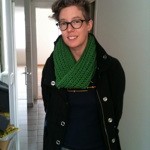 Dr. Elisabeth Schäfer (University of Applied Arts Vienna)
Dr. Elisabeth Schäfer (University of Applied Arts Vienna)
Internationale Ko-operationspartner_innen [International co-operationspartners]:
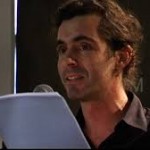 Dr. habil. MAS Jens Badura: Head of the research unit “Performative Practice” at Zurich University of the Arts (ZHdK)
Dr. habil. MAS Jens Badura: Head of the research unit “Performative Practice” at Zurich University of the Arts (ZHdK)
 Dr. Laura Cull: Senior Lecturer in Theatre Studies and Director of Postgraduate Research for the School of Arts, University of Surrey
Dr. Laura Cull: Senior Lecturer in Theatre Studies and Director of Postgraduate Research for the School of Arts, University of Surrey
 Dr. Alice Lagaay: Senior Lecturer in Philosophy at Bremen University
Dr. Alice Lagaay: Senior Lecturer in Philosophy at Bremen University
IMPRESSUM
![]()
gefördert durch den Fonds der wissenschaftlichen Forschung Österreich (FWF)
Comments are closed.
